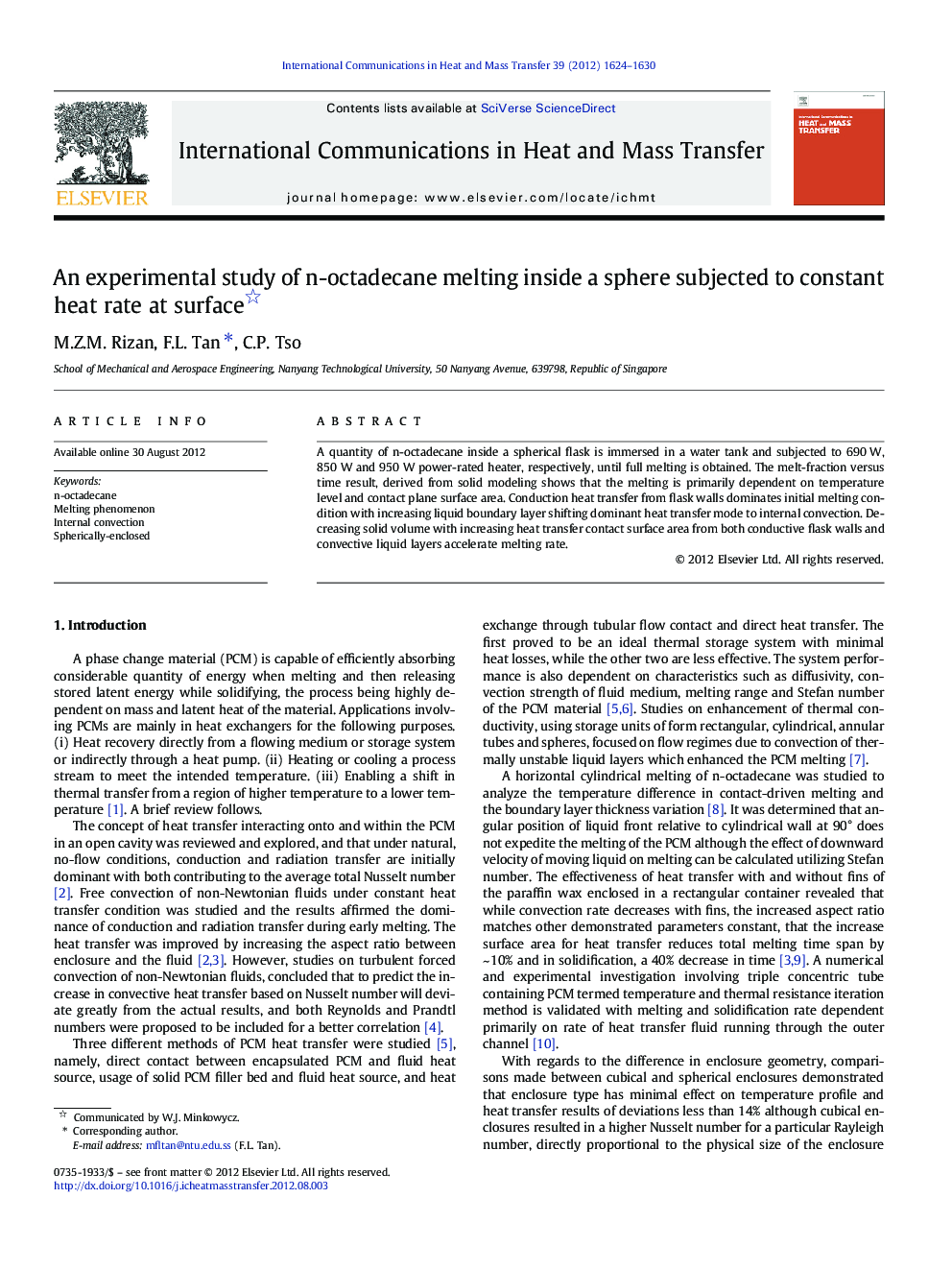| Article ID | Journal | Published Year | Pages | File Type |
|---|---|---|---|---|
| 653602 | International Communications in Heat and Mass Transfer | 2012 | 7 Pages |
Abstract
A quantity of n-octadecane inside a spherical flask is immersed in a water tank and subjected to 690 W, 850 W and 950 W power-rated heater, respectively, until full melting is obtained. The melt-fraction versus time result, derived from solid modeling shows that the melting is primarily dependent on temperature level and contact plane surface area. Conduction heat transfer from flask walls dominates initial melting condition with increasing liquid boundary layer shifting dominant heat transfer mode to internal convection. Decreasing solid volume with increasing heat transfer contact surface area from both conductive flask walls and convective liquid layers accelerate melting rate.
Keywords
Related Topics
Physical Sciences and Engineering
Chemical Engineering
Fluid Flow and Transfer Processes
Authors
M.Z.M. Rizan, F.L. Tan, C.P. Tso,
